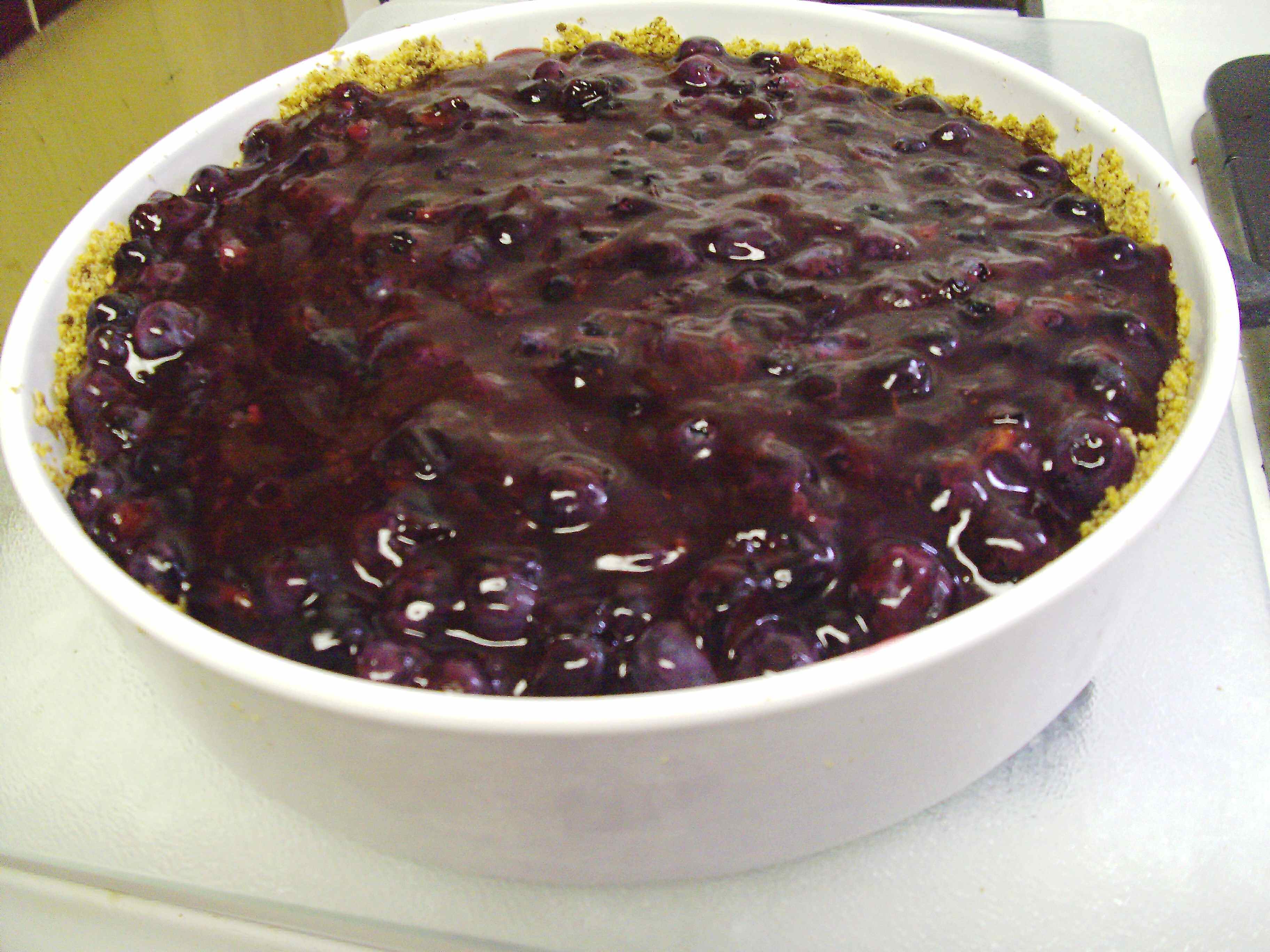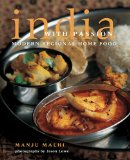Last week I got a Chanukah package in the mail from my sister. In it was India with Passion: Modern Regional Home Food by Manju Malhi, a British food writer with a popular UK cooking show, Simply Indian, on home-style cooking. One of my sister’s food-savvy friends had tried out the recipes and raved about it.
Indian food is becoming more popular in America and non-Indians like me are finally getting to taste a broader variety of regional cuisines (though I’ve yet to get down to Artesia, the “Little India” section of west LA, and really dig in). But learning to cook these dishes at home is another matter.
Yamuna Devi, Maddhur Jaffrey, and Julie Sahni were the first major Indian cookbook authors in the U.S. But their classic books and most of the ones published since then don’t give you a way to make sense of the laundry lists of spices given for each recipe. They give a rote answer as to why Indian cooks don’t use the standard yellow jar of generic curry powder that the supermarkets stock, but there’s no serious discussion on the balance of flavorings and how to vary it within a meal for any one particular regional cuisine. And perhaps there really is no great way to explain it. You really have to read through the book and see how the spices and proportions change from one dish to another–something most Western readers aren’t used to noticing.
If I had my wish, I’d want general notes like “red lentil dal is better with twice as much cumin as coriander seed and a fair amount of both–we’re talking teaspoons to a tablespoon for 6 portions–but palak paneer should have much less of both–half-teaspoons– in equal amounts and include cardamom–preferably the black smoky kind–as the signature ingredient.” I want to know why you have onions cooked down to a paste in one dish but no garlic, and in another use fennel instead of cumin. What’s essential and what can I leave out if I don’t have it in the house? How can I vary the dish with the vegetables or beans that I have on hand at the moment and still have it come out tasting good? And what’s authentic and what’s modern?
A crop of recent cookbooks published in the US and UK attempt to deal with these problems a little more systematically–sometimes more for recent Indian emigrés and students than for the larger non-Indian community. Monica Bhide has simplified the spice lists in her recipes–sometimes to the point where you wonder if the food bears any resemblance to the original. Suvir Saran, lauded by Mark Bittman and the first Indian restaurant chef to join the American name-brand-chef pantheon, has also simplified ingredients lists and incorporated some American ingredients–like ketchup–with reasonable reasons (ketchup’s origins lie in British-controlled India of a century or so ago). And cooking teacher Raghavan Iyer has just come out this year with a big, bright paperback tome, 660 Curries, which logically ought to be more than you could or would want to cook in a couple of years.
One new trend is an attempt to make Indian food heart-healthier by cutting down on saturated fats, substituting unsaturated vegetable oil for ghee and tofu for paneer cheese. What they haven’t yet done, and probably should, is cut back the salt as well. (So should everybody else, of course.)
Nearly every Indian cookbook I’ve ever seen uses screamingly high salt–rarely less than a teaspoon for a dish that serves 4-6, often a tablespoon or even more. Since several dishes are meant to be eaten together at a time, these teaspoons and tablespoons really add up at the table. Especially here in America because the portion sizes tend to grow once Old World cuisines hit our shores.
High salt may be traditional mostly because traditional cooking equipment was limited to a kadai (a curved-bottom cooking pot like a wok) and a small cooking fire. If so, it’s time to rethink the limitations. We have pressure cookers and microwave ovens, and as far as I can see, Indian home cooks here are well ahead of the rest of us on using both for daily cooking.
Having made an ad-hoc red lentil dal with a lot of flavor but without any salt at all, I’m not inclined to believe you genuinely need lots of salt to integrate lots of spices and aromatics. The other popular claims are “It makes the onions cook down faster” and “Well, it is a lot, but I’m using natural sea salt so it’s ok”. This last argument–common to foodies worldwide, certainly not just new-wave Indian chefs–is so silly I have to keep myself from putting a row of forehead-height dents in my kitchen wall every time I read it.
Having trained as a chemist, I’m definitely not inclined to believe the differences in sodium density–which does vary up to about 40% among sea, kosher, and table salt–will magically make up for dumping whole spoonfuls of your favorite trendy variety into every dish. Too much salt is still too much salt.
So what’s left? Guess it’s the onions argument. Well-browned onions, cooked almost to the point of jam, are an essential part of the flavor base in a lot of the traditional dishes, and it’s here that many recipes call for a teaspoon or more of salt. So it seems like something you’d want to know–do you need salt or not, and if so how little can you get away with? If the salt is for osmosis to draw out moisture and get the onions browning, wouldn’t a pinch of sugar work as well?
Judging from several recent kitchen demonstrations of channa masala dal (chickpeas in tomato/onion sauce) on YouTube, the time appears to be about 15-20 minutes total to cook down a whole chopped onion with anything from a teaspoon to a tablespoon of added salt. Funny thing, that’s about what I get at home in a nonstick frying pan with a little olive oil–sometimes in less time–with no salt at all. So there goes that.
India with Passion is stuck through with beautiful photos of Indian street life as well as pictures of the dishes. It’s loosely organized by north-east-south-west, with chapter introductions to the styles of each region and a description of the order and flavors of the dishes in a typical meal–something that helps me imagine how each dish in the section should fit in and perhaps what should be the dominant flavor of each.
Looking more carefully at the recipes, I discover that most of Manju Malhi’s dishes show an unusually restrained hand with salt. Her main dish recipes, desserts, breads and chutneys rarely tip over 1/4 teaspoon of salt for a dish that serves 2-3 people, or at most 1/2 teaspoon for 4-6.
That’s less than half the salt I see thrown in and made excuses for (or even praised) in most other contemporary cookbooks and live or blog presentations. And that goes for both Indian and western food. And she doesn’t even say anything particular about it, which she probably would have done if she had consciously altered the traditional recipes she’s gathered.
So now I’m going to have to cook something from it and Fedex it back to my sister in New York for an official taste test. Inquiring minds want to know. First up: aloo gobi. But I think I’ll skip the salt until after I taste it without.
Filed under: Beans and legumes, books, cooking, Dairy, DASH Diet, nutrition, Revised recipes, sauces and condiments, Vegetabalia | Tagged: cookbooks, Indian food, Indian home cooking, Indian regional cuisine, Julie Sahni, low sodium, low-salt cooking, Maddhur Jaffrey, Manju Malhi, Raghavan Iyer, slow food, Suvir Saran, vegetarian recipes, Yamuna Devi |




